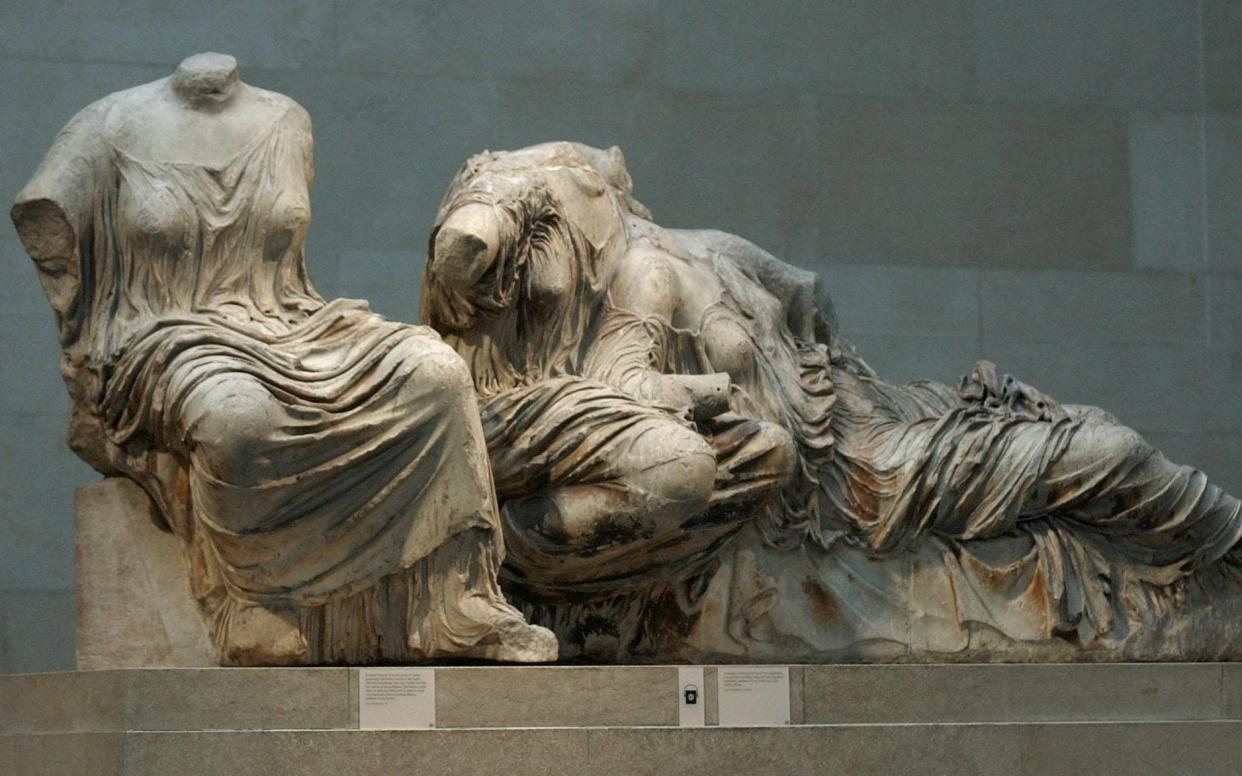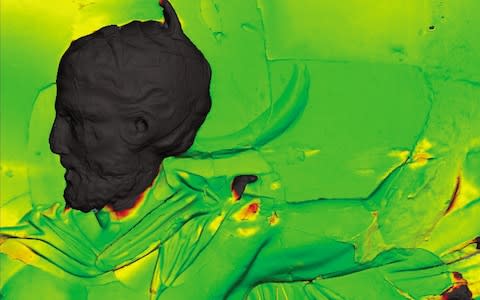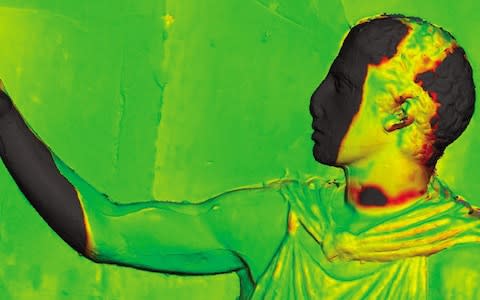Why Greek historians may have lost their marbles had it not been for Lord Elgin

Lord Elgin’s controversial raid on the Parthenon marbles may actually have helped to preserve the Acropolis artworks for future generations, a new study suggests.
Thomas Bruce, the 7th Earl of Elgin, sparked a diplomatic row in the early 19th century after removing sculptures from the ruined Athenian citadel, and bringing them back to Britain.
But the British Ambassador also made a series of plaster casts of the friezes and sculptures he left behind, and new research suggests they are now in far better condition than the originals, and can give insight into missing details.
Dr Emma Payne, of the Department of Classics at King’s College London, carried out 3D imaging of the sculptures and compared them to later casts and those still in situ. She discovered that the Elgin casts have acted as a kind of ‘time capsule’ for the artworks.
Lost faces which have crumbled away or were defaced on figures in the Acropolis were found to be preserved in the Elgin's reproductions.
And Dr Payne's analysis even uncovered tool marks around some of these missing features, confirming vandalism was responsible for some of this damage.

“While I certainly don’t condone Elgin’s removal of the sculptures, we can be thankful that he also made efforts to create plaster casts,” she said.
“The casts he had taken of the sections of frieze he left in situ do preserve details that were lost from the originals, sometimes by vandalism and sometimes by the effects of pollution and weathering, in the years before they were removed to a museum environment in the late 20th century.”
Dating from the 5th century BC, the marbles, which were created under the supervision of Greek sculptor Phidias, are considered among the best in the world.

Lord Elgin was appointed as the British Ambassador to the Ottoman Empire in 1799 and immediately began making a record of the ancient sculptures of Athens.
As part of this, he made moulds of the Parthenon’s West Frieze in 1802 and then removed many of the original panels to his London home, to protect them from neglect and damage. Although he claimed to have permission, papers have never been found.
The British Museum acquired new casts in 1872 through the British Consul at Athens, Charles Merlin. But the new analysis shows that by the tine the Merlin casts were made the Parthenon had already deteriorated significantly.
Dr Payne also believes the sculptures Elgin brought back to Britain may be in a better condition now than if they had been left behind.
“It is very likely that the pieces of Parthenon sculpture in the British Museum would now be in poorer condition if Elgin had left them on the Acropolis,” she said.
“On the whole, they have been safer in the museum than exposed to modern pollution on the Acropolis – this is precisely the reason for which the remainder of the frieze was removed to the Acropolis Museum in the 1990s.”

Many casts of artworks were made in the 19th and early 20th century for private collections and museums, and the new study suggests that they may be a more valuable resource for scholars than the originals.
However Dr Payne also found that some of the Elgin casts have crude additions which were added later, and which bear little resemblance to the originals.
“Archaeologists have also known for some time that the people making the casts would sometimes reconstruct damaged areas and I found more evidence of this practice than anticipated," she added.
“It seems that features like the broken tips of noses were quite commonly ‘corrected’ in the casts of the early 19th century, although this practice became much rarer later in the century.”
The research was published in the journal Antiquity.

 Yahoo News
Yahoo News 
